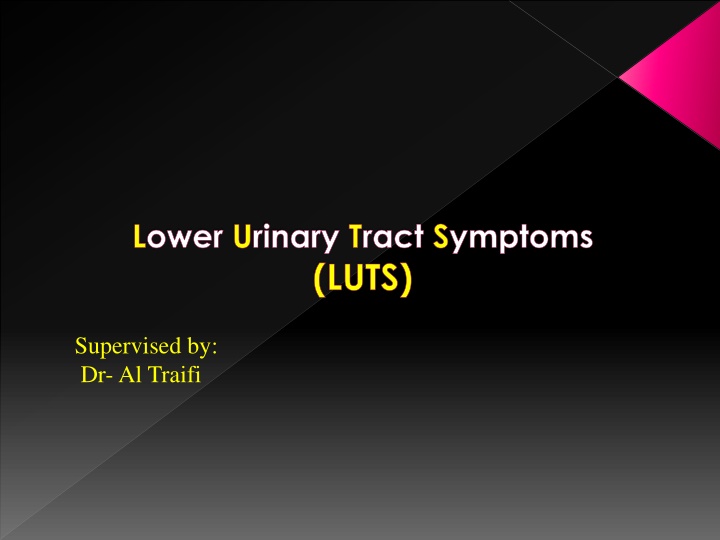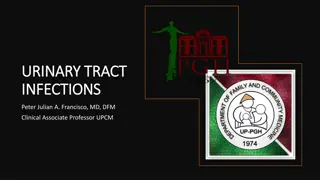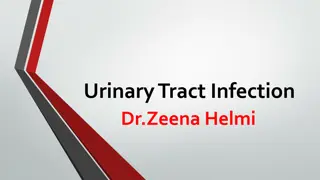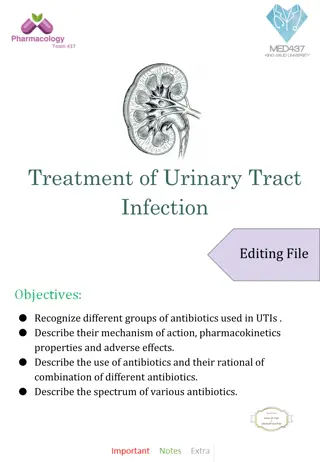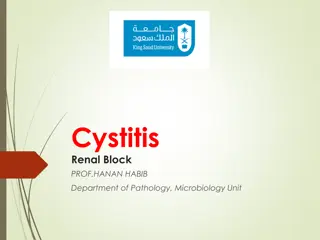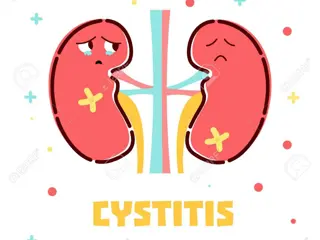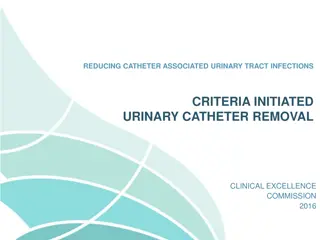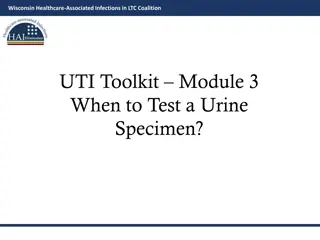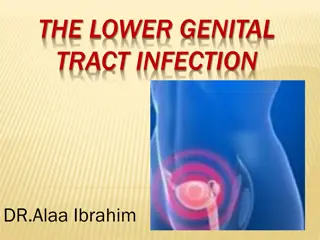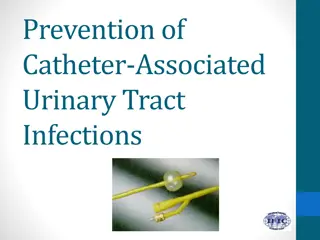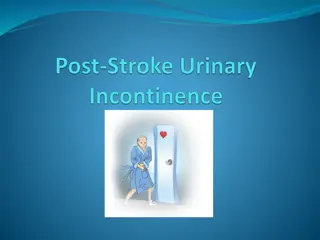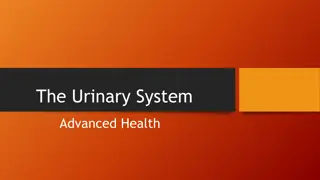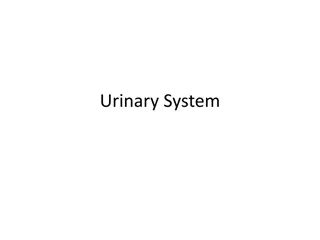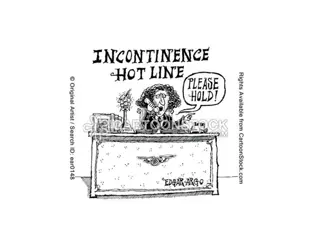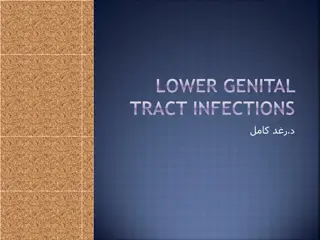Overview of Lower Urinary Tract Symptoms (LUTS)
Lower Urinary Tract Symptoms (LUTS) are a common urological presentation characterized by a range of symptoms reflecting underlying conditions rather than a specific disease. Understanding the causes, symptoms, workup, and management strategies for LUTS, particularly in relation to conditions like Benign Prostatic Hyperplasia (BPH), is essential for effective patient care.
Download Presentation

Please find below an Image/Link to download the presentation.
The content on the website is provided AS IS for your information and personal use only. It may not be sold, licensed, or shared on other websites without obtaining consent from the author.If you encounter any issues during the download, it is possible that the publisher has removed the file from their server.
You are allowed to download the files provided on this website for personal or commercial use, subject to the condition that they are used lawfully. All files are the property of their respective owners.
The content on the website is provided AS IS for your information and personal use only. It may not be sold, licensed, or shared on other websites without obtaining consent from the author.
E N D
Presentation Transcript
Lower Urinary Tract Symptoms (LUTS) Supervised by: Dr- Al Traifi
Objectives: Why LUTS? What are the symptoms? Common causes? Patient work up Details of the Common etiology BPH
INTRODUCTION LUTS is the commonest presentation in urology . It s a group of symptoms not a diseases It is due to many diseases
Lower Urinary Tract Symptoms (LUTS) Causes Males: Pediatric Adult Females: Pediatric Adult
LUTS LUTS post voiding Voiding storage
LUTS Voiding (Obstructive) Hesitancy. Loss of force and decrease of calibre of the stream. Straining for voiding Interruption of the urinary stream Terminal dribbling.
Storage (Irritaive) Frequency Frequency. Nocturia Nocturia. . Urgency. Urgency. Urge incontinence. Urge incontinence.
Post void Symptoms Post void Dribbling Post void Dribbling Sense of incomplete emptying the bladder Sense of incomplete emptying the bladder
History of DM DM Urological intervention Urological intervention CNS problems and symptoms CNS problems and symptoms Hematuria Hematuria Previous urinary retention Previous urinary retention Burning Micturation and Febrile UTI Burning Micturation and Febrile UTI Drugs intake Drugs intake Constipation Constipation
International Prostate Symptoms Score (IPSS) & Q of L More Than Half the Time Less Than Half the Time Almost Always Not at All Less Than 1 Time in 5 About Half the Time 1. Over the past month, how often have you had a sensation of not emptying your bladder completely after you finished urinating? 0 1 2 3 4 5 2. Over the past month, how often have you had to urinate again less than 2 hours after you finished urinating? 0 1 2 3 4 5 3. Over the past month, how often have you found you stopped and started again several times when you urinated? 0 1 2 3 4 5 4. Over the past month, how often have you found it difficult to postpone urination? 0 1 2 3 4 5 5-Over the past month, how often have you had a weak urinary stream? 0 1 2 3 4 5 6. Over the past month, how often have you had to push or strain to begin urination? 0 1 2 3 4 5 7. Over the past month, how many times did you most typically get up to urinate from the time you went to bed at night until the time you got up in the morning? None 0 5 times 1 time 2 times 3 times 4 times Pleased Mostly satisfied 2 Unhappy Delighted If you were to spend the rest of your life with your urinary condition just the way it is now, how would you think/believe about that? Mixed equally 3 Terrible 4 1 0 5
Clinical Examination Abdominal examination Bladder palpation Kidney palpation PR examination.
Investigations MSU & Urine culture Urine Cytology U&E LFT PSA
Cystometry Pdetmax
Management Watchful Waiting Watchful Waiting Alpha Blockers Alpha Blockers Alpha Reductase Inhibitors Alpha Reductase Inhibitors
Benign Prostatic Hyperplasia BPH It is a histological diagnosis and represents an increase in the number of epithelial and stromal elements of prostate It is the comments etiology of LUTS Disease of elderly men
Clinical manifestation: Hesitancy Poor stream Frequency Urgency Double voiding Post void dribbling Incomplete emptying
PR examination Normally, prostate is firm, smooth and with a palpable sulcus. signs of BPH: enlarged firm with palpable sulcus. Sign of malignancy: hard nodular surface with impalpable sulcus.
Investigation Urinalysis PSA BUN and Cr US LFT
Treatment Medical: Tamsulosin: It blocks adrenergic alpha-1 receptor of smooth muscle of prostate. It decrease bladder neck and urethral resistance. It is usually indicated in BPH.
ADVERSE EFFECT: 1- Headache . 2- Arthralgia . 3-Rhinitis . 4- Decrease libido . 5- back pain . Contraindications: 1- Liver disease . 2- Orthostatic hypotension . 3- Hypersensetivity .
Finasteride It is a 5-alpha reductase inhibitor. It is an antiandrogenic drug . It is used in case of BPH . It is also indicated in case of alopecia in women .
ADVERSE EFFECT: 1- Breast enlargement 2- Impotence 3- Rash CONTRAINDICATION: 1- Hypersensitivity 2- Pregnancy 3- Children
BPH Indications for surgery Renal impairment. Renal impairment. Hydronephrosis. Hydronephrosis. Recurrent UTI Recurrent UTI secondary vesical stones secondary vesical stones Recurrent Hematuria Recurrent Hematuria Retention of urine Retention of urine Significant symptoms not responding Significant symptoms not responding to medication to medication
Surgery Transurethral Transurethral Minimal Invasive Minimal Invasive Invasive, Transurethral Resection Prostatectomy ( TURP) Invasive, Transurethral Resection Prostatectomy ( TURP) Open Prostatectomy Open Prostatectomy
